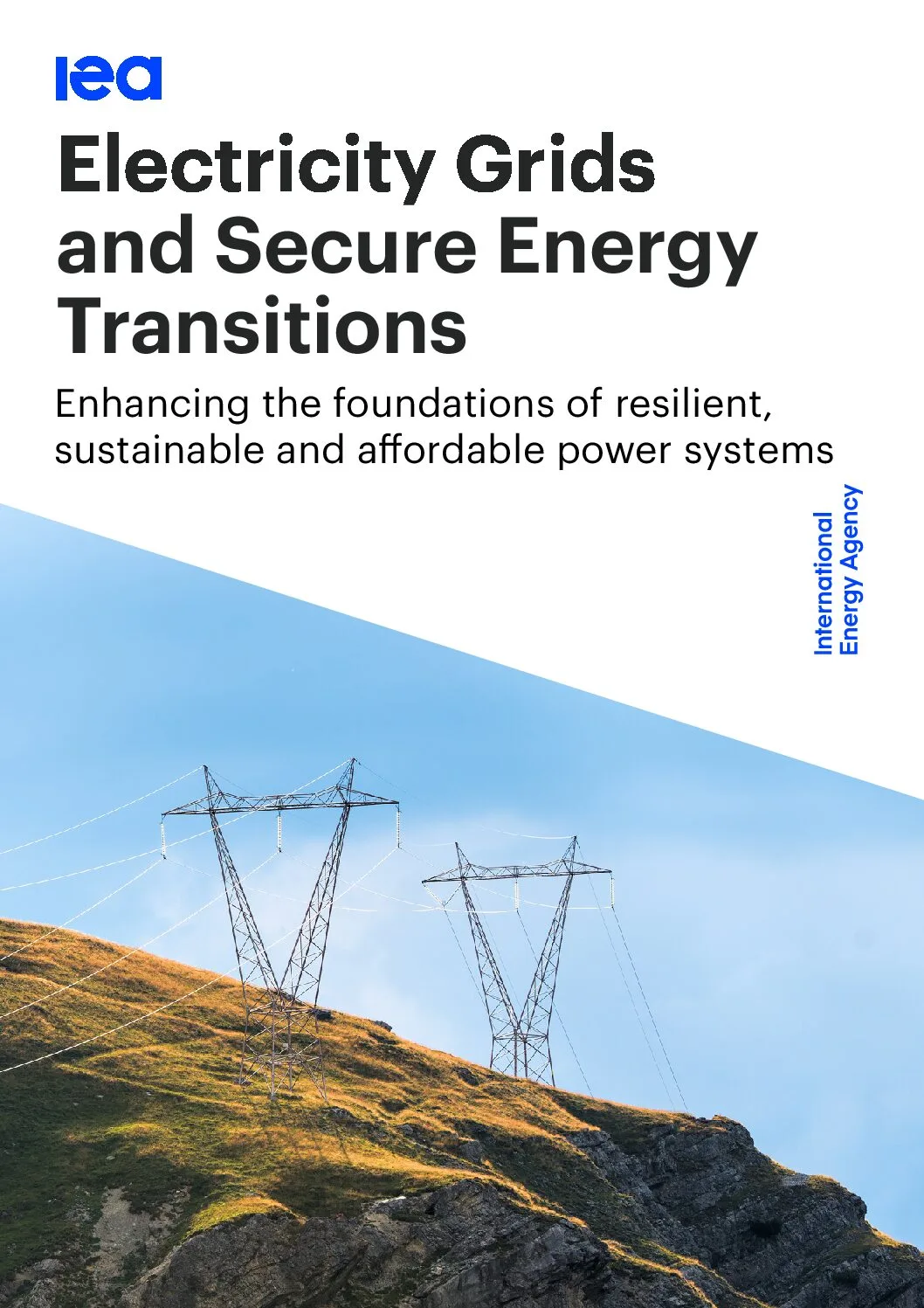Electricity Grids and Secure Energy Transitions report released by the International Energy Agency
The backbone of today’s electricity systems, grids are set to become increasingly important as clean energy transitions progress, but they currently receive too little attention. Grids have been delivering power to households, businesses and industry for over 100 years. Clean energy transitions are now driving the transformation of our energy systems and expanding the role of electricity across economies. As a result, countries’ transitions to net zero emissions need to be underpinned by bigger, stronger and smarter grids.

At least 3 000 gigawatts (GW) of renewable power projects, of which 1 500 GW are in advanced stages, are waiting in grid connection queues – equivalent to five times the amount of solar PV and wind capacity added in 2022. This shows grids are becoming a bottleneck for transitions to net zero emissions. The number of projects awaiting connection worldwide is likely to be even higher, as data on such queues is accessible for countries accounting for half of global wind and solar PV capacity. While investment in renewables has been increasing rapidly – nearly doubling since 2010 – global investment in grids has barely changed, remaining static at around USD 300 billion per year.
The report provides a first-of-its-kind stocktake of grids worldwide.
Key highlights
- Grids are not keeping pace with the rapid growth of clean energy technologies like solar, wind, etc.
- The world’s electricity use needs to grow 20% faster in the next decade than in the previous decade.
- Achieving all national climate and energy goals will require adding or replacing 80 million kilometers of power lines by 2040.
Grid length development in advanced economies in the Announced Pledges Scenario, 2021-2050
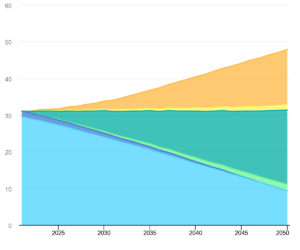
Grid length development in emerging market and developing economies in the Announced Pledges Scenario, 2021-2050
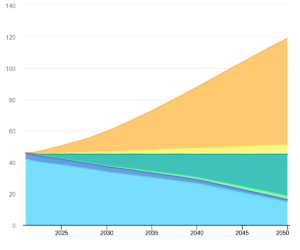
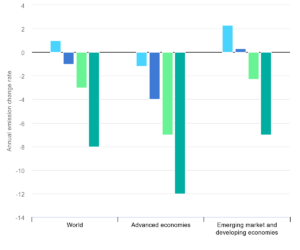
Average annual investment in grids and renewables by regional grouping in the Announced Pledges Scenario, 2011-2050
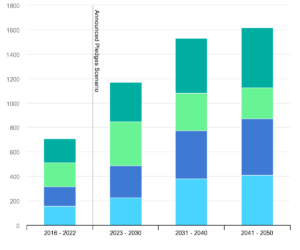
Challenges for grid of the future
- Grid congestion and bottlenecks in connecting renewable projects
- High technical grid losses, India reports one of the highest levels of losses at close to 20%.
- Investment has been falling off in recent years in developing countries.
Significance of electricity grids for secure energy transitions: to decarbonize electricity supply, to integrate renewable energy, for efficient exchange of clean electricity between countries, etc.
Recommendation
- Long-term planning as grid infrastructure often takes five to 15 years to complete.
- Increased grid investment, nearly doubling by 2030 to over USD 600 billion per year.
- Secure supply chains, by standardizing procurement and technical installations.
- Expanding and strengthening grid interconnections within countries, between countries, and across regions.
Initiatives taken for grid development
Global
- Global Energy Interconnection: Proposed infrastructure platform for transmission, and consumption of clean energy.
- Green Grids Initiative: to accelerate the construction of the new infrastructure needed for a world powered by renewable energy
- One Sun One World One Grid: to connect different regional grids through a common grid
National
- Development of inter- and intra-state transmission capacity through national programs (e.g. Green Energy Corridor),
- SAUBHAGYA scheme played a role in connecting households to the grid.
Read About: The High Cost of Cheap Water: World Wide Fund for Nature (WWF) report on World Food Day
